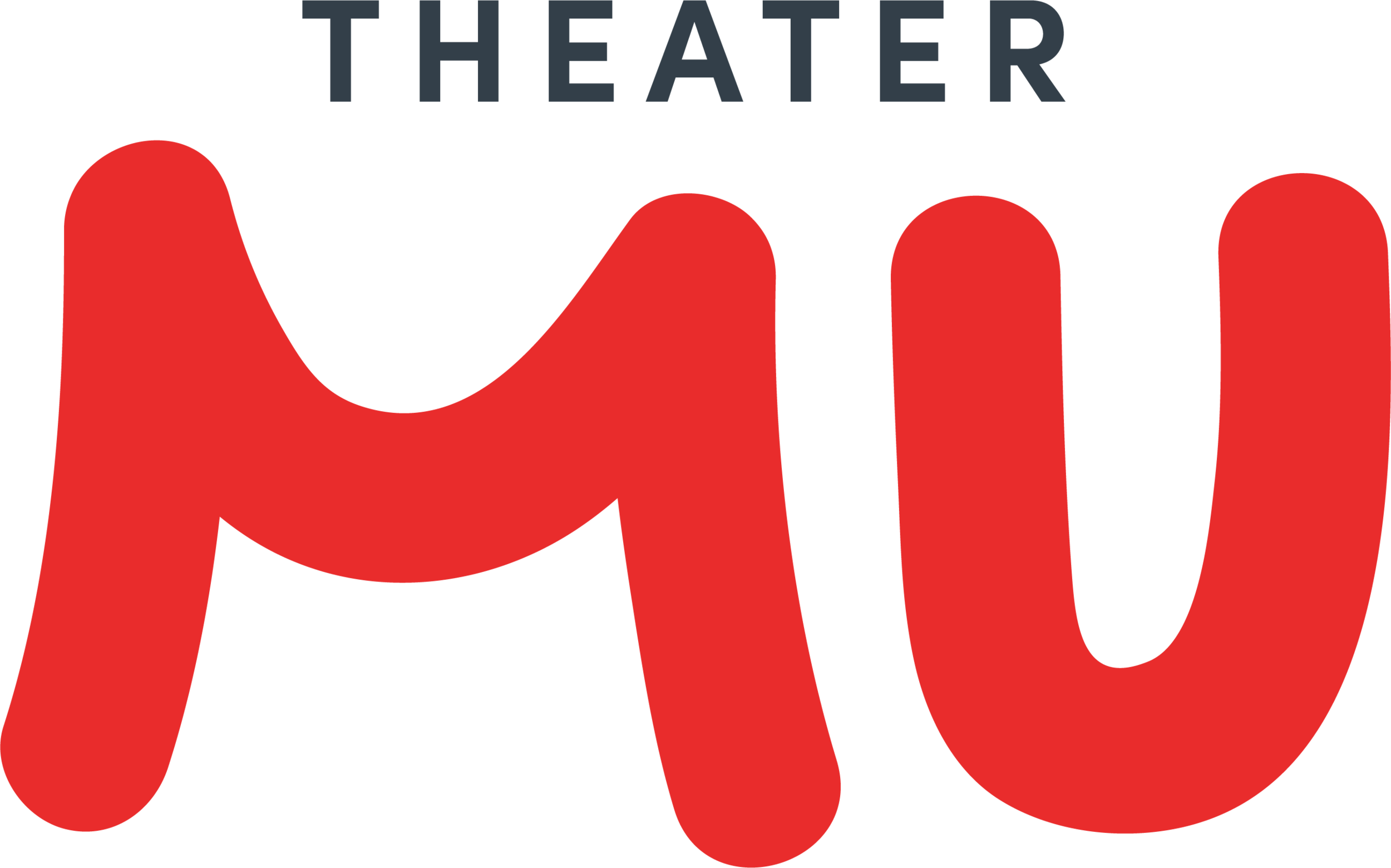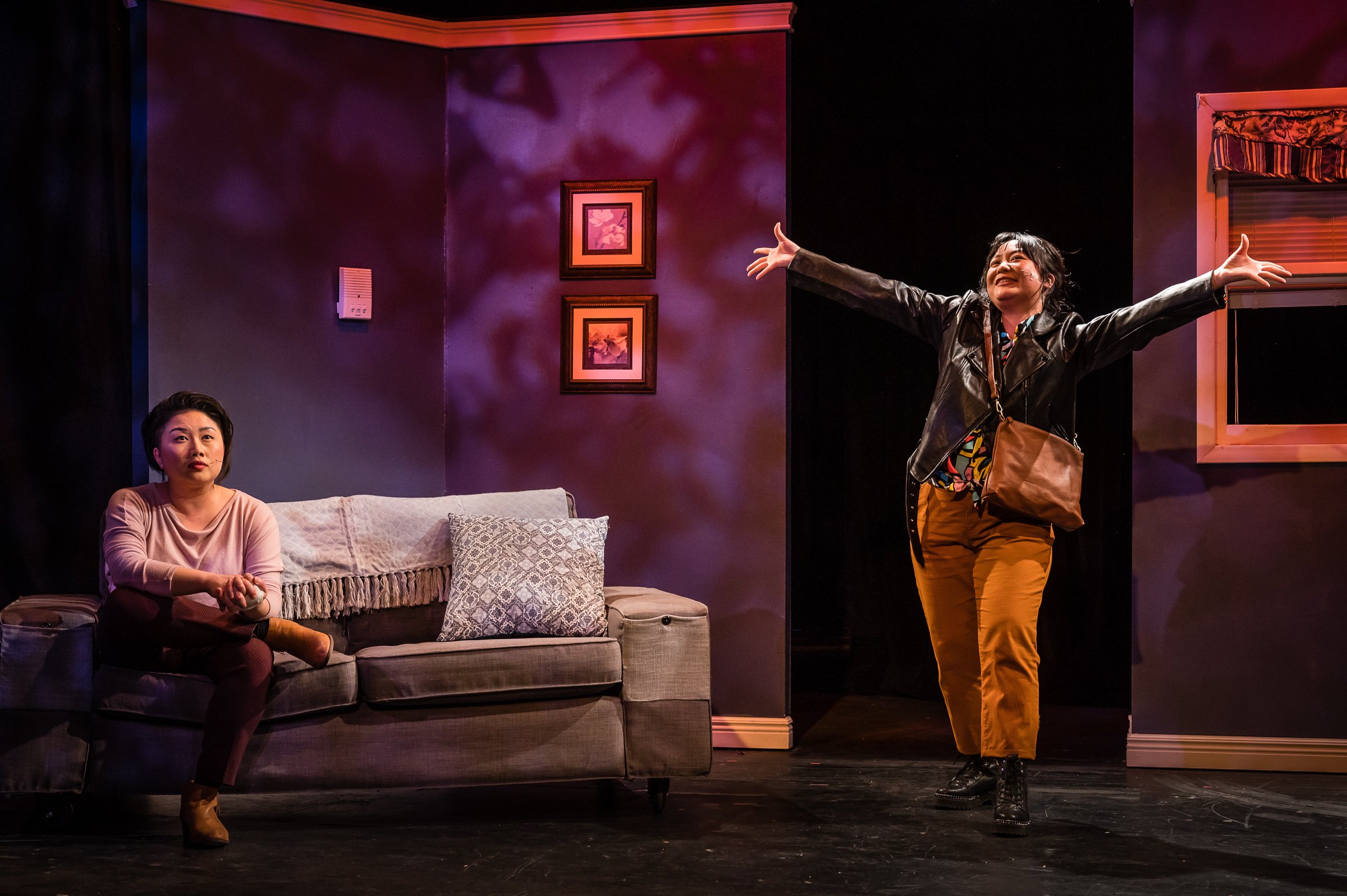Q&A with AGAIN Scenic Designer Alice Endo
Production photos feature scenic design by Alice Endo, properties design by Kenji Shoemaker, lighting design by Erik Paulson. Photos by Rich Ryan.
When scenic designer Alice Endo first read through the script of Again in October 2022, the image that drew her in was the snail. Despite how ordinary the little creature may seem, in Katie Ka Vang and Melissa Li's new musical, Endo saw the snail's appearances as a way to break the audience out of reality and transport them to the show's more surreal and dream-like moments.
Fast forward four months later, and Again is approaching its world premiere by Theater Mu, running from March 29 through April 16 at Mixed Blood Theatre. Directed by Nana Dakin, this heartfelt and irreverent musical tells the story of Hmong memoirist and cancer survivor Mai See and a young filmmaker named Quest, who is inspired to document Mai See’s story despite suffering from chronic cancer herself. And while there aren't, say, giant snail murals in Endo's final scenic design, the symbol served as an important checkpoint as she decided how best to uphold Mai See and Quest’s stories.
Before Again opened, we sat down with Endo, who has previously worked with Mu as assistant scenic designer on Man of God (2022) and design intern on Today Is My Birthday (2021). From incorporating ancient Greek scenography, to collaborating with other designers, to explaining just what about that snail struck her, Endo offers insight into creating the world of Again.
So the snail stood out to you. Why?
I'm naturally drawn to—and generally, designers looking for visual inspiration in the script get excited about—the moments when we can break out of the mundane world and into a heightened reality, fantasy, or dream. And so in the script, there are the sort of little moments at the beginning of the play, like where a little snail appears and crashes Mai See's desk. You don't know if it's a hallucination, or a fantasy, or what's exactly happening. ... But the snail felt like an important symbol because the rest of the play is very true to the realities of our lives, and so the snail was exciting as a chance to break out of that.
It also represents the connection to Hmong textiles. That's another throughline, the snail and the elephant foot motifs in Hmong textiles. That visual encapsulated a lot of the play's themes, the fantasy elements of it, but also Mai See's relationship with her Hmong identity.
Scenic rendering by Alice Endo
How has your design concept changed from your first instincts to the finished product?
In the beginning, I was playing around with hospital curtains as a motif, and as something that could move on the set and let us see lots of different configurations of the stage. But ultimately, in conversation with Nana, the director, we decided that the play needs to be about real humans, so it doesn’t suit the story to visually always be in the hospital. The characters aren’t symbols—the play is very specifically about the specific experiences of the humans onstage... So we chose to dial into that specificity, instead of going in a more abstract visual direction.
From there as a designer, I treated the set as a big puzzle, asking, “How can we get all the furniture on and off, and make the things rotate, and make the flats do what they need to do?”
Early set model by Alice Endo featuring periaktoi
When you say “the flats,” do you mean the rotating triangle columns?
Yeah, we haven't come up with a good name for those. We call them the flats, which isn't the most descriptive term. The idea came from this technique that dates back to ancient Greek scenography. ... It’s this very ancient technique called a periaktoi, where you essentially have a triangular prism, a three-faced surface, that can rotate about a single point in the center. And you could have a couple of them or the whole stage lined up with 40 of them. If they all rotate, it's a way of having three different backdrops using the same set without flying anything in or out.
For this musical, there are so many locations that we need to travel through in the past, and it was important to the director and me that we felt like we were really in those locations. When we were looking at Mai See, we wanted to really be in her apartment and see the little details of her personality. And so, the periaktoi shape and its ability to rotate while not taking up that much space was a really useful trick.
Are there aspects or symbols of Hmong culture that influenced the set design?
Some of that comes in the specificity of Mai See and Shia, the two sisters in this play, and what their apartments look like. It was great to have so many Hmong artists working on the process because people could chip in details to make those settings more specific.
But aside from the textile motifs, the snail and the elephant foot, it felt important not to make the set too simplistically Hmong, if that makes sense. Again is about these individual characters who are Hmong grappling with that throughout the play, and with what family and community mean in that context. Mai See is a writer, so she's tapping into a lot of her memories of that cultural identity. But she is so many other things, and the story is about so many other parts of her identity. It was important that we didn’t force this show to be the Hmong play, because it’s ultimately a show about Mai See, an individual Hmong-American woman.
For those who are less familiar with the behind-the-scenes of theater, could you talk more about how you work with all the other designers?
This has been a big collaboration show between Kenji [Shoemaker, properties designer,] and me, because it is realism, so furniture is a huge thing we collaborated on.
I was the first designer brought on and started conversations with Nana back in the early fall. And then, as more designers were added to the process, we were able to have meetings where most of the designers were there, and there wasn't the time pressure of the impending first rehearsal. We were able to brainstorm ideas freely without the rigidity of disciplines, and that was a really great thing.
Sometimes, a set designer has already come up with a set design by the time anyone else gets introduced to the process. In this process, it was great to have input from Erik [Paulson, lighting designer], who also happens to be a set designer, or from Kenji, as the props and set worlds are so closely linked in this play. ... We were able to have a longer form collaboration. And then, as we've gotten closer to production, the collaboration has become much more granular and about specific details like, "If I hang a light here, will this mess with your thing that's hanging behind it?" That collaboration comes easily because we've been working together for a while.
If you were to use three words to describe your design concept for Again, what would they be?
Specificity is a word I've said a lot in this conversation. The human details of a person's life and what looking at a person's living room tells you about what's going on in their head, who they are as a character. So specificity.
Fluidity. Ease of transitions and the way that, ideally, in this play scenes flow from one to another, sort of spinning around the main character as she's experiencing everything she is.
And I'll say cinematic, too, in the sense that I think this is a play that's inspired by TV and movies. And, in a way, what we're trying to do with the set design is to emulate what a set design can be in TV and movies, transplanted to the firehouse at Mixed Blood in a more fluid musical theater sense.
What do you hope audiences will take away from Again?
This feels like a cop-out answer because it's kind of true of theater generally, but I hope that the audience will come away from it with more empathy and knowledge about an experience that they maybe haven't had. The lives represented in the characters of Again are very specific to what they're going through. And I think for most people watching it, we’re watching someone go through a bigger struggle than a lot of us go through on a day-to-day basis. But there's some detail in Again, some bit of humanity, that can teach everyone in the audience a different thing.
This interview has been edited for clarity, length, and style. See Again this spring from Mar 29-Apr 16; select performances have mask requirements or offer accessibility services of supertitle captions, ASL interpretation, or audio description. All tickets are Pay As You Are.




